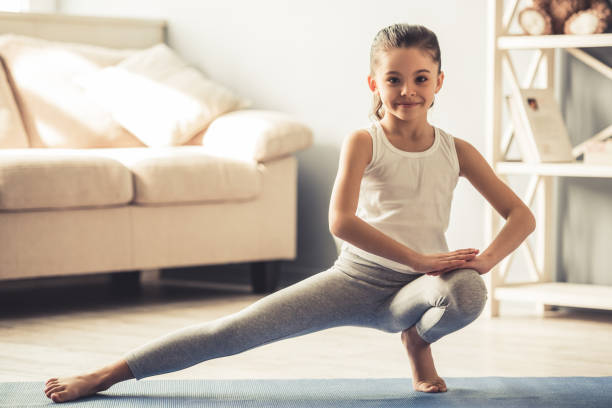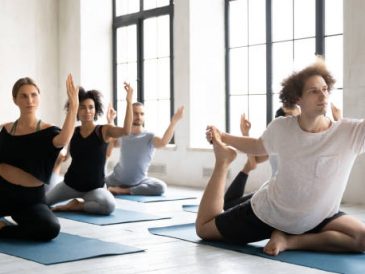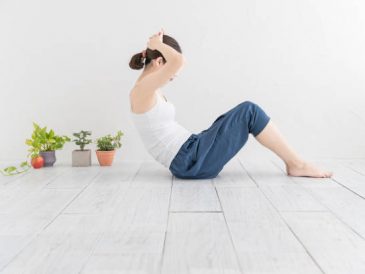Child’s Pose, or Balasana, is a resting posture and a place of relaxation and comfort in the yoga practice. This asana is frequently used as a point of restoration after difficult and tiring postures, allowing practitioners a moment to restore the rhythm of their breath and surrender to the moment.
CSome advanced practitioners may view a child’s pose as a posture for beginners that has no place or value in their practice. This thought is far from the truth.
Balasana, a simple asana that is a counter pose to other asanas, has many benefits. This grounding, nurturing posture has many advantages and should be practiced by all levels of yogis.
Child’s pose is not just for beginners. Here are six reasons to prove it.
It’s Not Really a Beginner Pose
Balasana may not be the best posture for beginners. This seemingly simple posture of rest requires great flexibility. The ankle joint is extended as the toes are pointed toward the back. There is also a greater extension of the knee joint.
The posture also mimics a Forward Fold that causes a rounding in the lower back and deep compression at the hip joints as the torso moves toward the thighs.
Stretching occurs in a subtle, gentle way during the pose. However, flexibility is required to enter the pose without props.
It’s a Gentle stretch.
It is not always the case that deeper is better. The body may need time to warm up and prepare itself for deeper stretches, regardless of the flexibility of a yogi.
The Child’s Pose can be used to warm up the body before a yoga practice for both beginners and more advanced practitioners. Balasana gently and slowly opens the hips and lower back as well as shoulders, necks, thighs, and ankles. It is an excellent full-body warming up for any yoga practice.
This aids digestion
Balasana helps you breathe deeply in the abdomen and back of the body. You can literally feel your breath move as you inhale and exhale by placing your abdomen against your thighs.
This compression on the thighs creates a massage for the organs. Holding here long enough while taking conscious deep breaths can help your digestive system and organs to move along.
This is a great counter-pose.
Yoga postures can be used to maintain harmony and balance. They are designed to move your body in a certain direction and then in an opposite direction. The Child’s pose is a great counter-pose to a variety of poses of different levels of difficulty.
The Child’s Pose has been widely accepted as a counter-position to inversions, as it helps slow the heart rate down after the stimulation of flipping upside-down. This pose is also a counter to backbends (after allowing your spine to neutralize for a short period). It creates flexion in the spine, which equalizes the extension that backbends cause.
Child’s Pose, a useful asana to add to your repertoire of counter poses, is a pose that should not be missed in any practice.
The benefits of this product go much deeper than the surface level
The Child’s Pose puts your spine into the Primary Curve. This is the same curve of the spine as in the womb, which creates a feeling of comfort and safety. This position encourages the flow of blood and nerve signals.
The Primary Curve gently lengthens nerves in the sympathetic nervous systems that branch from the thoracic spine and lumbar spine (the lower and middle back) as well as the parasympathetic system, which branches from the upper spine and sacrum (neck and pelvic region). These systems are lengthened to create greater mobility, allowing nerves and muscles to work more efficiently.
The child’s pose also makes contact between the forehead and a floor surface (or with your hands, a block, or a blanket). The contact between your forehead and something else stimulates the vagus (a regulator of the parasympathetic system), which runs along the forehead.
This stimulation has the power to lower blood pressure and reduce tension and cortisol in the body.
This reminds you to find balance in your practice.
Many advanced yogis enjoy challenging themselves on the mat. They strive for deeper and deeper asanas and more difficult transitions. While it is wonderful to grow your practice and learn more from it, both mentally and physically, there is a point when you need to rest.
Balasana is a reminder to maintain balance on your mat, that sacred balance of effort and ease. Child’s pose encourages you, before or after challenging poses, to relax and listen to your breathing, as well as draw your attention inward. The simplicity of this pose and the softness it encourages in the body will remind you to breathe with simplicity.
Balasana allows practitioners to achieve balance at all levels and abilities. After all, isn’t it finding balance that brings you to your mat?




